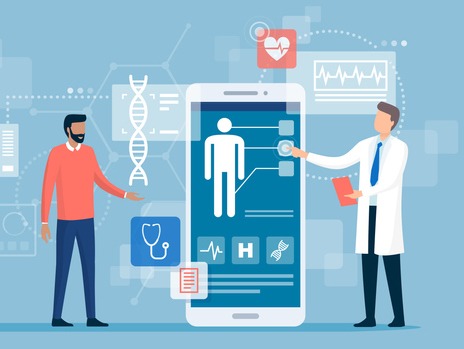
The healthcare field can be a dangers place! The Economic Cycle Research Institute shares its top 10 hazards – things to watch out for and address in 2020
This is an edited version of an article first published on Medscape
The Economic Cycle Research Institute’s (ECRI) Top 10 Health Technology Hazards, now in its 13th year, identifies health technology concerns which the organisation believes warrant the greatest attention by healthcare leaders in the coming year.
The hazards are selected on the basis of a rigorous review of ECRI’s incident investigations, medical device testing and public and private incident reporting databases. The list, which is produced by ECRI’s health devices group, is accompanied by practical strategies which hospitals and healthcare providers can put in place to reduce the risks.
Risk 1
The potential for the malfunction and misuse of surgical staplers to cause harm to patients is the number one health technology hazard
“Injuries and deaths from the misuse of surgical staplers are substantial and preventable. We want hospitals and other medical institutions to be in a better position to take necessary actions to protect patients from harm,” Marcus Schabacker, MD, PhD, president and CEO of ECRI Institute, said in a statement.
Surgical staplers have garnered increased attention in the past year. In March, as reported by Medscape Medical News, the US Food and Drug Administration (FDA) sent an alert to clinicians about an increase in the number of medical device reports (MDRs) regarding the use of surgical staplers.
Risks 2 to 5
Taking the number two spot on the list of top tech hazards for 2020 is point-of-care ultrasound (POCUS), because the increase in its use is outpacing policies and practices that could prevent misuse or misdiagnosis, the group notes.
Patient safety concerns include POCUS not being used when warranted, misdiagnoses, inappropriate use of the modality and overreliance on POCUS when a more comprehensive examination by an imaging specialist is indicated.
Number three on this year’s list is the risk for infection associated with sterile processing errors in medical and dental offices. Failure to consistently and effectively clean and disinfect or sterilise contaminated items before use can expose patients to virulent pathogens.
The group suggests designating a qualified staff member, or contractor, to support office infection prevention and control practices, providing appropriate training for benchtop steriliser operators and conducting periodic competency testing.
Taking the number 4 spot are central venous catheter (CVC) risks associated with at-home hemodialysis. The US federal government recently announced a push to increase the use of home treatment for patients with kidney disease. The possibility that more patients with CVCs might receive hemodialysis in the home raises concerns; for patients who receive hemodialysis through a CVC, the risks associated with home dialysis may outweigh the benefits, the report says.
Number 5 on the list is unproven surgical robotic procedures. ‘Surgical robots are being used for an expanding range of procedures, sometimes before the risks have been fully assessed’ the report states. They call on healthcare facilities to develop robust processes for approving the use of surgical robots for new procedures, as well as comprehensive programmes for training, accrediting and privileging surgeons and operating room staff for those procedures.
The final five
Rounding out the final five of our hazardous top 10 are the following:
6. Alarm, alert, and notification overload, which can overwhelm clinicians, creating the potential for a significant event to go unaddressed.
7. Cybersecurity risks in the connected home healthcare environment which can lead to an interruption in transfer of patient monitoring data, potentially leading to misdiagnosis or delayed care.
8. Missing implant data in relation to MRI; being unaware of a patient’s implant information can put patients in danger and delay MRI scans.
9. Medication errors from dose-timing discrepancies in the electronic health record, which can have significant clinical consequences.
10. Loose nuts and bolts in devices, which can lead to catastrophic accidents, harming patients, clinicians, or bystanders.
Don’t forget to follow us on Twitter, or connect with us on LinkedIn!

Be the first to comment